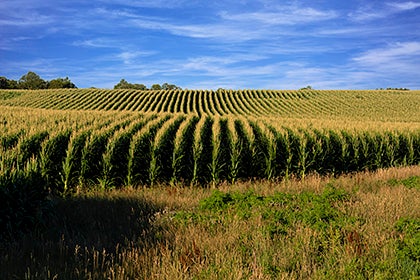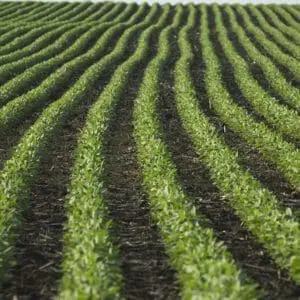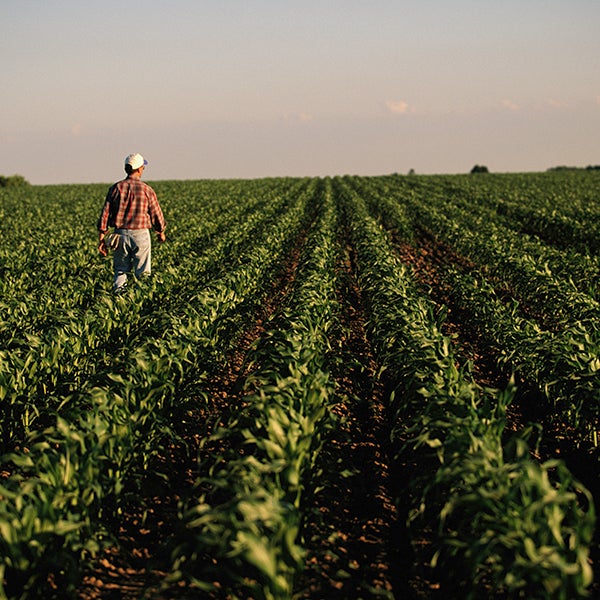
Get more from your fungicide applications
Get more from your fungicide applications
Three tips for choosing the right adjuvant to help your fungicide deliver its full potential in row crops
Growers constantly deal with variables outside of their control — from weather to insects to soil types. Fungal diseases are a variable that affects crops year in and year out. They reduce yield, lower grain quality, impact standability and even produce toxins that limit the crop’s use as feed or food.
Fungicides serve as a trusted tool for growers to protect their crops and bottom lines from these threats. But what if there were ways to get even more performance from a fungicide?
“To get the most from a fungicide application, the goal is to maximize coverage and absorption into the plant,” says John Blackford, branded technology portfolio manager for Wilbur-Ellis. “That’s where adjuvants such as surfactants can help.”
Partners protecting yield

Fungicides and adjuvants each serve separate but important functions. Fungicides help to provide a protective barrier to help prevent and cure fungal diseases. Certain biofungicides like Romeo can even activate the plant’s natural defense mechanisms to help it fight back against stressors.
“Adjuvants, particularly surfactants, help make the fungicide more effective through better coverage and absorption into the plant,” says Blackford. “This translates into better plant performance and ultimately more yield.”
Think of a high-quality fungicide like a racecar. Adding the right adjuvant is like selecting proper race tires — better traction and grip will help you to get more speed and control versus using stock tires from a standard sedan.
How growers achieve their ROI with adjuvants
A quality fungicide program can be a significant investment, and an adjuvant can help growers to achieve a stronger return on that investment through increasing the efficacy of the fungicide application, leading to stronger plant performance and ultimately more yield.
There are many adjuvants available in the marketplace, and it can be overwhelming deciding which one to use. Here are three factors to keep in mind when selecting an adjuvant this season:
- Identify the obstacles preventing the ideal application
“Whenever you apply a fungicide, you need to consider the spray barriers that stand in your way,” says Blackford. “Plants have natural characteristics that can interfere with a good application — something as simple as an upright leaf angle can make it hard to get complete coverage of the leaf.”
Other common barriers to coverage and absorption include leaf hairs and waxy cuticles which keep spray deposits from making consistent contact with the leaf surface.
Two strong options to overcome these barriers are EMBRECE-EA® and RAINIER-EA®.
- EMBRECE-EA provides superior wetting and spreading of the spray material across the leaf surface, along with quicker absorption into the plant tissue, leading to better control of the targeted pest.
- RAINIER-EA quickly wets and spreads, allowing for uniform coverage. It also increases absorption and translocation of systemic products into the plant tissue.

In addition to spray barriers, there are many different spray disruptors that can interfere with a successful pesticide application. Wind, temperature, humidity, rain and ultraviolet degradation, to name a few. One common spray disruptor is hard water.
“The ions in hard water can bind with the chemistry so it’s not available to the plant,” says Blackford. “You could be missing out on the active ingredient you need simply because of an issue with the water in the tank mix.”
RETRIBUTION® is an adjuvant option for hard water, specifically designed to condition the water in your tank mix. It can effectively mitigate the harsh effects of hard water that can be antagonistic to the spray mix solution.
- Learn the classes of adjuvants available to you
There are many different types of adjuvants out there, with hundreds of individual products and brand names. Therefore, it can be useful to group adjuvants into different categories. Here are just a few categories that are helpful for growers looking to make the most of their fungicide, insecticide and herbicide applications.
Surfactants
Surfactants can help to improve a pesticide’s ability to disperse, spread and stick. By reducing surface tension, surfactants increase a droplet’s ability to remain in contact with the leaf surface1. This category includes products like EMBRECE-EA and RAINIER-EA.
Conditioning Agents
Conditional agents are used to reduce the issues caused by the minerals found in hard water, such as calcium and magnesium1. This category includes products like RETRIBUTION.
Deposition agents
Deposition agents (stickers) can increase a pesticide’s ability to stick to a target’s surface1. This can decrease the amount of pesticide that remains on plant surfaces after rain or irrigation. This category includes EFFICAX®.
EFFICAX® enhances your control over early-season weeds by getting more herbicide on target, holding it in place longer and ensuring your herbicide investment is more efficient than ever.
- Rely on trusted people and products
With many manufacturers in the adjuvant category, it can be difficult to know who to work with.
“What sets Wilbur-Ellis apart is that we’ve been in the adjuvant business for a very long time,” says Blackford. “We have very robust lab and field trial network to perform extensive testing before bringing anything to market, so we’re confident what we’re putting out into the field is going to work as expected.”
“The Wilbur-Ellis team has boots-on-the-ground experience with these products and knows how to apply them with different herbicide, insecticide and fungicide programs for optimal results,” says Blackford.
While you can’t change the disease pressures in the field, you can prepare to deal with them. A robust fungicide and adjuvant package can give you the best head start to manage the disease threats your crop faces.
To identify which adjuvants will work best for your crop protection program, lean on the expertise of your local Wilbur-Ellis agronomist.
Source: University of Wisconsin Crops and Soils Division of Extension

